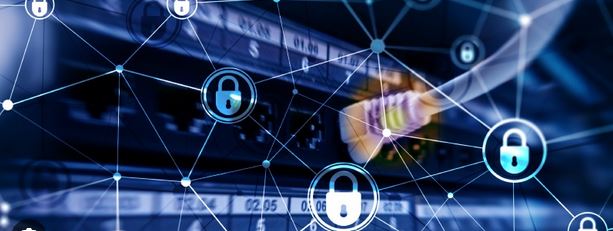Importance of School Network Security
Schools and educational institutions face increasing challenges in safeguarding sensitive data. Ensuring school network security, and protecting against cyber threats is key in today’s digital era. As schools embrace technology for teaching and administrative purposes, the significance of relevant IT policy measures cannot be overstated. Securing the digital infrastructure of educational facilities is crucial. This is to uphold data confidentiality and maintain trust. Also, a safe school network ensure uninterrupted learning environments.
see; best SIP trunk provider in Kenya
And the starting point would be to install endpoint protection software such as the Bitdefender Antivirus. Next, acquire and setup a unified threat management firewall e.g. Fortigate firewall.

Educational institutions, ranging from elementary schools to universities, handle vast amounts of sensitive data. The data handled include student records, financial information, and intellectual property. Ensuring the confidentiality, integrity, and availability of this data is paramount. A breach in data integrity not only jeopardizes student privacy but also undermines the institution’s credibility. Exposure of private information can lead to disruption in the normal academic operations.
Moreover, the proliferation of online learning platforms, digital resources, and connected devices has expanded the attack surface for cyber threats. Therefore, schools must adopt comprehensive network protection strategies to mitigate the internet risks. And, protect against various forms of cyberattacks, such as malware, phishing attempts, ransomware, and data breaches.
Network Security tools
Risk Assessment and Planning: Schools must schedule regular risk assessments to identify vulnerabilities and implementing strategies hardening systems. Conducting regular assessments also help in prioritizing security measures based on potential risks. A well-defined security plan tailored to the institution’s specific needs is fundamental.

School Network Security Measures: Implementing firewalls with intrusion detection capability, and encryption protocols can safeguard network infrastructure from unauthorized access and cyber threats. Implement strong authentication mechanisms, limit access privileges, and enforce the principle of least privilege to prevent unauthorized access.
see; biometric time attendance system price
Data Protection and Privacy: data protection can be effected through utilization of robust data encryption methods. To begin with, establish access controls, and adhere to data privacy regulations. Secondly, conduct regular threat exposure assessments. All these measures remain crucial to safeguarding sensitive information.
see; best payroll software price
Cybersecurity Education and Training: Educate students, teachers, and staff about cybersecurity threats installs a safe online behavior. Also staff and students can be taught how to identifying phishing attempts and maintaining strong passwords. And adherence to best practices creates a security-conscious culture within the educational community.
Regular Updates and Patch Management: Keeping software, operating systems, and device firmware up-to-date mitigates system vulnerabilities. Regular software updates and patch management will help in strengthening the overall school network security posture.
Incident Response and Disaster Recovery: Establish protocols for incident response and data recovery in the event of a security breach. These protocols are vital in minimizing the impact of potential cyber incidents. Also, encrypt sensitive data and maintain regular backups stored in secure locations just in case of a ransomware attack.
Types of Cybersecurity Threats
Educational institutions have become prime targets for cyber threats due to the wealth of sensitive information they harbor. Besides personal student records and financial data, schools also have custody of important intellectual property rights and research findings. Clearly, this trove of valuable information can be targeted by malicious actors seeking to exploit. Cyber threats in the education sector encompass a broad spectrum, including:
- Data Breaches: Schools store an abundance of confidential data, including student records, grades, and health information. Data breach occur when somebody gets unauthorized access to student and staff records. This results in the exposure of sensitive personal information.
- Ransomware Attacks: Cyber attacks can disrupt school activities, affecting teaching, administrative processes, and access to critical resources. During Ransomware attack, a malware is used to encrypt school data folders. The encrypted files and folders will be rendered inaccessible until a ransom has been paid by the school. Besides loss of funds, these attacks usually disrupt school operations.
- Phishing and Social Engineering: online fraudsters use deceptive tactics to trick individuals into divulging sensitive information. During phishing attacks, legitimate system users normally get tricked into sharing login credentials. If this kind of attack succeeds, the school management system will be exposed to manipulation by the attackers.
- Network Intrusions: network intrusion occur when unauthorized people access to school networks. The end result of intrusion attacks will be data theft, manipulation, or disruption of services. Managing this challenge involves deployment of unified threat management firewall. The firewalls have inbuilt protection modules such as intrusion detection and prevention that monitor and protect the school’s computer network.
Strengthening School IT Security Infrastructure
Educational institutions are increasingly reliant on technology to enhance learning experiences, streamline administrative tasks, and facilitate communication. However, alongside the numerous benefits of integrating technology into the educational ecosystem, there exists challenges posed by cybersecurity threats. Be that as it may, schools remain key custodians of vast amounts of sensitive student and staff data. Therefore IT security measures should be put in place to safeguard the computer infrastructure. These safety measures will ensure the confidentiality, integrity, and availability of information.
see; PBX phone system
Strengthening the computer infrastructure and connectivity starts with the implementation of proactive network security policies. And safeguarding sensitive data, and ensuring uninterrupted operations are key considerations during policy formulation. By prioritizing cybersecurity preparedness, schools can create a secure digital environment where technology plays an increasingly central role.
see; call queue manager system
Partnering with Cybersecurity Experts
Collaboration between educational institutions and cybersecurity experts plays a pivotal role in strengthening IT security in schools. Partnerships with cybersecurity firms can provide schools with valuable support and guidance in enhancing their security posture.

As technology continues to evolve, schools must adapt IT policy measures to address emerging cyber threats. The integration of Internet of Things (IoT) devices and artificial intelligence introduces new complexities. Increased attack surface presents vulnerabilities that require proactive IT policy measures. However, cybersecurity experts can advise on better ways to ensure secure access, and data protection data across various online platforms.
see; CCTV cameras installation price
The human factor remains a critical aspect in maintaining IT security. Thus, educating students, teachers, and administrative staff about cybersecurity best practices is essential. Empowered teachers and students can fortify the institution’s defense against social engineering attacks. Also, cybersecurity awareness will help expose negligent actions that could compromise security.

By prioritizing cybersecurity, schools can create safer and more resilient environments conducive to learning and innovation. And as threats evolve, proactive measures remain essential in safeguarding the integrity, confidentiality, and availability of educational resources. Even so, implementing comprehensive strategies and fostering a culture of security awareness is a great starting point.
Contact us today for cybersecurity solutions suitable for schools and academic institutions in Kenya



